



























MIDWEEK UPDATE 1 AUGUST 2018
Plan Your Weekend……..Forthcoming Events…….Aviation News
Worldwide Incidents and Accidents……This Week in Aviation History


1-5: SAC SA Nationals Tempe Bloemfontein. Contact Annie Boone chunge@mweb.co.za
4: SAAF Museum AFB Zwartkop open practise day. Officer Commanding - Museum oc@saafmuseum.org.za 012 351 2290
4: Thabazimbi Apiesdoring Carnaval Fly-in. Weekend option or fly in for the day. Contact Chris cehlers@gmail.com or 082 371 4492 or Gert 083 652 6208



9: Stellenbosch Flying Club Women's Day Fly in. Contact Alison Navarro 083 728 78386 architecnic1953@gmail.com or Louise Hofmeyer 083 454 1104 louise@airshowsa.org.za
19: Rand Airport Airshow. Contact Stuart Coetzee E-mail: manager@randairport.co.za Tel: 011 827 8884
19: World Helicopter Day. Henley Air Rand Airport.
25: Sheila Taylor Fun Rally - Krugersdorp Airfield. Contact Grant Rousseau Cell: 082 329 3551E-mail: gr@kama.co.za
25 - 25: Bethlehem Airshow Stefan Fourie fouriesj1491@gmail.com 072 344 9678

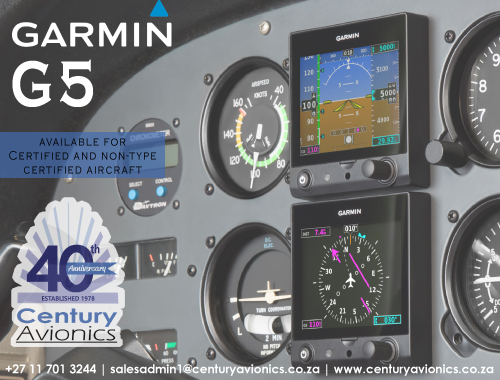
5: EAA Chapter 322 meeting. Dickie Fritz Moth Hall Edenvale. Contact: editor@afskies.co.za
8: SAAF Museum AFB Zwartkop open practise day. Officer Commanding - Museum oc@saafmuseum.org.za 012 351 2290
8: Grand Central Fun Rally. Contact Rob Jonkers e-mail: rob@aerosud.co.za Cell:082 804 7032
15 to 16: Sport Aerobatics Judges Trophy Tzaneen TBC Contact Annie Boon E-mail: chunge@mweb.co.za
3rd Saturday of every month. Microland. Bring and braai. Fires and bykos provided. Fires start from 09h30. Contact person: Nick Swardt 082 441 8011 or Alan Hussey 072 82 2341
19 - 23: 2018 AAD EXPO, Waterkloof Airforce Base Leona Redelinghuys info@aadexpo.co.za 084 840 3215 www.aadexpo.co.za
22: 49th Oudtshoorn Scale Fly in. Cango Flying Club.
21-24: MISASA Africa Cup-Microlight Weekend 2018 at Hotel Numbi
25: Lydenburg Fly-in Festival. Static displays and spot landing competition. Contact Dean 082 908 4565 or Louis 082 550 8832

The Aviation Radio Show; get all your questions answered in one place. To listen to a recording of the live broadcast click on the link:
www.debela.co.za/aviation-radio-show

EAA AIRVENTURE OSHKOSH 2018 FACTS AND FIGURES
"A 'perfect' event may be unattainable, but AirVenture 2018 came about as close as one could imagine. The combination of outstanding programs, aircraft variety, a robust economy, and good weather combined to complement the efforts of our staff and 5,000 volunteers throughout the grounds. The week was upbeat, exciting, and filled with many 'Only at Oshkosh' moments." Comment from EAA Chairman Jack Pelton. Photos © Willie Bodenstein.
Attendance: Approximately 601,000, nearly two percent above of 2017's record total. Comment from Pelton:
"EAA members and aviation enthusiasts attended in large numbers, even without the presence of a military jet team as we had in 2017. Our efforts to create unique attractions and aviation highlights across the grounds were incredibly successful. Attendance on opening day was the best in our history, as the vast majority of our guests came to Oshkosh early and stayed throughout the week."
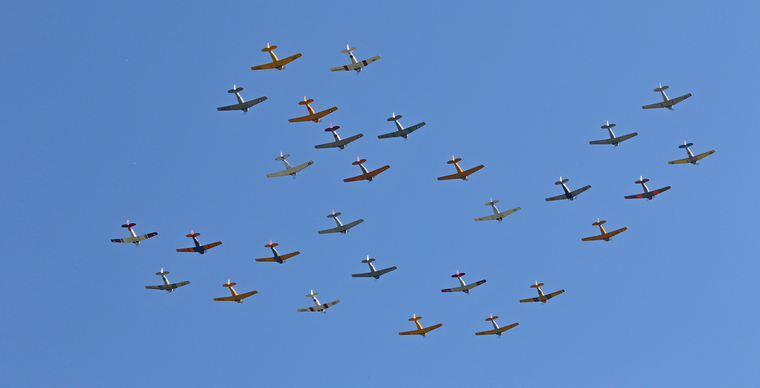
Total aircraft: More than 10,000 aircraft arrived at Wittman Regional Airport in Oshkosh and other airports in east-central Wisconsin. At Wittman alone, there were 19,588 aircraft operations in the 11-day period from July 20-30, which is an average of approximately 134 takeoffs/landings per hour.
Total showplanes: 2,979 (second straight year over 2,900): 1,160 homebuilt aircraft (5 percent increase), 1,094 vintage airplanes, 377 warbirds (7 percent increase), 185 ultralights and light-sport aircraft, 75 seaplanes, 22 rotorcraft, 52 aerobatic aircraft, and 14 hot air balloons.
Camping: More than 12,300 sites in aircraft and drive-in camping accounted for an estimated 40,000 visitors.
Commercial exhibitors: 867.
Forums, Workshops, and Presentations: A total of 1,500 sessions attended by more than 75,000 people.
EAA aircraft flights: 2,800 people flew aboard EAA's Ford Tri-Motors, while 3,032 people flew aboard EAA's Bell 47 helicopters and 680 flew aboard EAA's B-17 Aluminum Overcast.
Social Media, Internet and Mobile: More than 12 million people were reached by EAA's social media channels during AirVenture, including 5.5 million via Facebook videos; EAA's website had more than 1.7 million page views; EAA video clips during the event were viewed 2.2 million times;and EAA's 2,400 photo uploads were viewed more than 12.4 million times.Additionally, EAA web streams were accessed nearly 800,000 times by viewers in more than 200 countries, who watched more than 170,000 hours of activities from the AirVenture grounds. The AirVenture app was downloaded and used by nearly 50,000 attendees.
Guests registered at International Visitors Tent: A record 2,714 visitors registered from 87 nations, also a record total. (Actual counts may be higher since international visitor registration is voluntary.) Top countries represented by registered visitors: Canada (538 visitors), Australia (386), and South Africa (277).

Media: 976 media representatives on-site, from six continents.
Economic impact*: $170 million for the five counties in the Oshkosh region (Winnebago, Outagamie, Fond du Lac, Calumet, and Brown). * - based on 2017 University of Wisconsin Oshkosh economic impact study
What's ahead for EAA AirVenture Oshkosh 2019 (July 22-28, 2019)? Comment from Pelton: "We are celebrating our 50th consecutive year in Oshkosh during 2019, so we'll be looking back on a half-century of unforgettable highlights at Wittman Regional Airport, and planning activities that involve EAA's hometown and its unique place in aviation history. While 2018 is barely in the record books, we're talking to many groups and individuals with intriguing new ideas for aircraft, innovations, exhibits, and events. We're already planning for 2019 and are looking forward to announcing features and attractions very soon."
CAASA SCORES ANOTHER VICTORY FOR THE AVIATION INDUSTRY
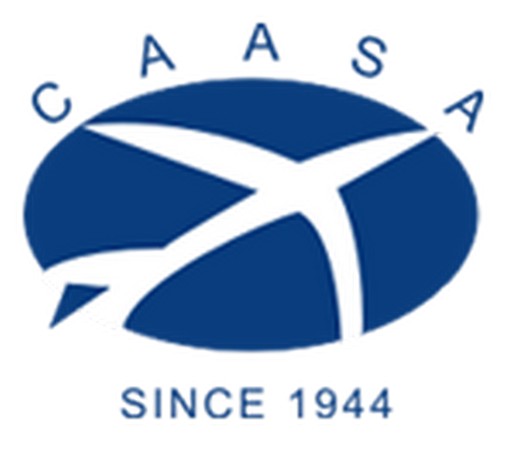
The new exemption was a CAASA initiative and considered the economic impact it has on the aviation industry. This new exemption, while not as accommodating that the new Part 93 amendment will be, is to temporarily cover the gap while the Department of Transport (DOT) and the Minister of Transport finalise the 19th and 20th amendments. The Part 93 amendment is due to be included in the 19th amendment.
The new exemption is valid for a period of 180 days and may (if necessary) be extended for a further 180 days. "We believe the amended Part 93 will see the 'light of day' within the next two months," said Kev Storie, Chief Operations Officer, CAASA. "CAASA, as is all industry is particularly concerned that not one section of the aviation regulation has been promulgated since the new Minister took office and this has raised many questions for which no satisfactory answers have been forth coming." Continued Storie.
According to CAASA, the time taken for this amendment is excessive, and CAASA is seeking answers as to why there are hold ups, and are working on solutions to minimise the disruption to the industry going forward.
CAASA believes if future regulations that are CARCom approved and recommended to the Minister, continue to take in excess of 6 months to be promulgated, it will seriously hamstring the aviation industry.
The Part 93 exemption is attached and can also be found on the SACAA website.
CENTURION-THE LEGEND REVIVED
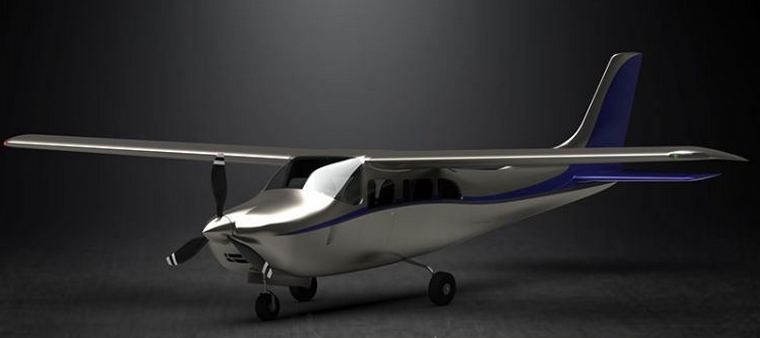
Centurion aeronautical engineers designed three aircraft to suit your needs, all carrying exacting standards, highest quality components and safety being paramount and central to the design process. Photo © Centurion Revisted
The first of a new legend - Designed using the latest computer-aided design and computational fluid dynamics to achieve highest performance and efficiency while creating a look that you fall in love with. The aircraft has set a new benchmark for the modern six-place aircraft using only the best materials and components available.
Safety is the primary mission at Centurion. Combining multiple technologies and solutions such as our CPSS, side stick control, single lever power control and Angle of Attack (AOA) display provides pilots with unmatched control and feedback.
Centurion created a variable centre of gravity system. This ensures optimum centre of gravity for a given load and safeguards efficient flying.
The Centurion Intelligence Monitoring Platform (CIMP) offers a simple and unique approach to workload reduction by constantly monitoring airspeed and AOA and anticipate under speed, over speed and an oncoming stall. Aural and visual warnings are given to the pilot and if nothing is actioned, the autopilot will engage to arrest these adverse conditions.
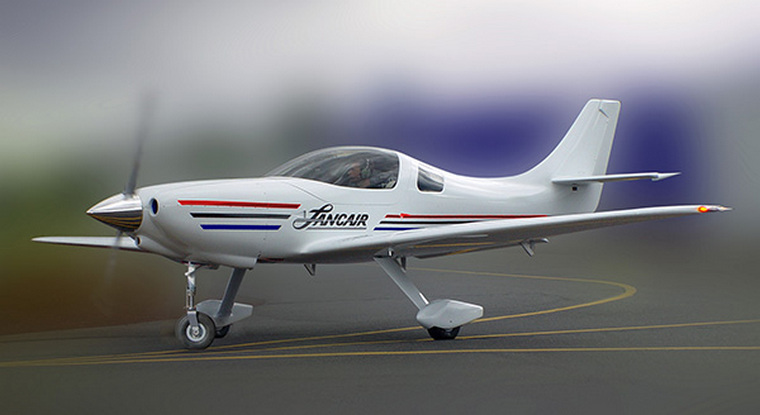
The latest innovation from Lancair is a new 2-seat "little brother" to the groundbreaking Mako - the Barracuda. Establishing a new standard for value, Barracuda offers high performance, operational economy and Lancair's trademark aerodynamic style in a cost-effective package for two. Photo © Lancair.
Featuring the fastest build time we've ever offered the Barracuda prototype may be seen on display in Lancair's AirVenture booth in the North Aircraft Display, #647 - 649.
"The Barracuda is a '2 / 2 / 2' proposition - 2 seats and 200 knot cruise for only $200K! We've taken the best features of the Mako and created an entry-level Lancair for the pilot who wants maximum performance with a minimum investment of build time and budget. We're expecting to take a big bite of the 2-seater performance market." Lancair President Conrad Huffstutler
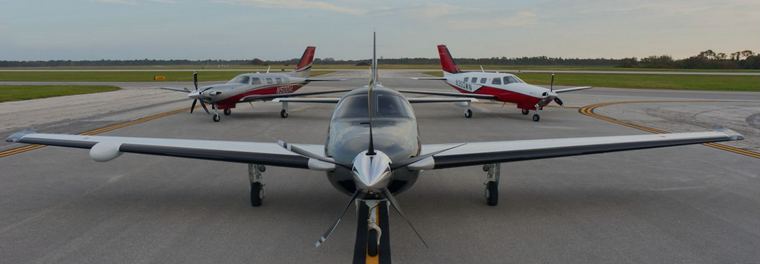
Q2 2018 Deliveries 65% Higher than Q2 2017. Photo © Piper.
Piper Aircraft, Inc. announced its results for the second quarter of 2018, ending June 30. The company posted Q2 2018 aircraft revenue of $62.3M on 53 deliveries versus $52.1M revenue on 32 aircraft deliveries in 2017.

2018 YTD Piper performance versus 2017 also reflects sustained and managed growth. 2018 YTD aircraft revenue increased $28.2M (37%) from $75.5M in 2017 to $103.7M in 2018. 2018 YTD aircraft deliveries mirrored revenue growth from 57 aircraft delivered YTD in 2017 to 87 aircraft YTD 2018 or 52% growth.
"Piper's offering of the only complete trainer product line continues to help expand sales and long-term commitments from many of the world's leading flight schools." said President and CEO, Simon Caldecott. "Additionally, demand for our M-Class products continues to be strong. As we look forward to the second half of the year, we anticipate continued strong performance across both primary segments with a strategic focus on the International market and robust product development."
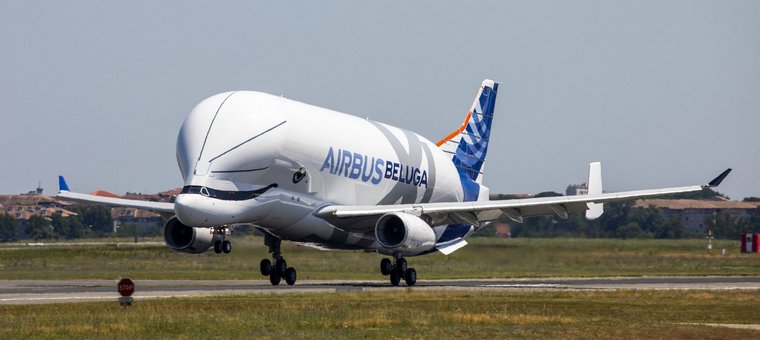
The first of five BelugaXL aircraft to fly has landed at Toulouse-Blagnac, France at 14:41 hrs local time after successfully completing its first flight lasting four hours and 11 minutes. Photo © JB Accariez/Airbus.
The crew in the cockpit on board this flight comprised: Captain Christophe Cail, Co-Pilot Bernardo Saez-Benito Hernandez and Test-Flight Engineer Jean Michel Pin. Meanwhile, monitoring the aircraft systems and performance in real-time at the flight-test-engineer's (FTE) station were Laurent Lapierre and Philippe Foucault.
Following the first flight, the BelugaXL will undergo some 600 hours of flight test over 10 months to achieve Type Certification and entry into service later in 2019.
The BelugaXL programme was launched in November 2014 to address Airbus' transport capacity requirements in view of the A350 XWB ramp-up and Single-Aisle production rate increases. Five aircraft will be built between 2019 and 2023 to gradually replace the five BelugaST.
The aircraft will operate from 11 destinations as Airbus' method of transporting large aircraft components.
Based on an A330-200 Freighter, the BelugaXL is powered by Rolls Royce Trent 700 engines. The lowered cockpit, the cargo bay structure and the rear-end and tail were newly developed jointly with suppliers, giving the aircraft its distinctive look.
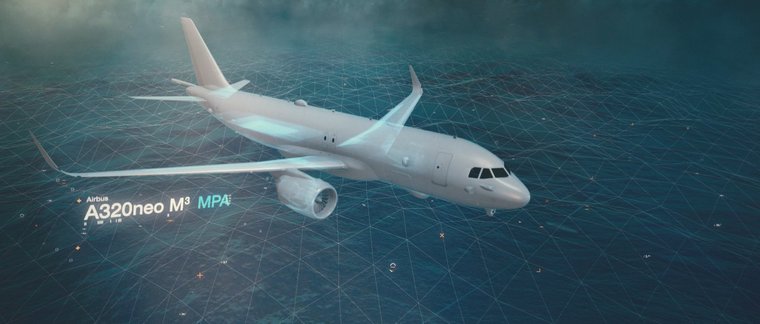
The best-selling jetliner is considered for a wide range of ISR and transport operations. Photo ©Airbus.
Having made its mark in the commercial airline sector, the A320neo is now being considered by Airbus for new applications: as a highly-capable and cost-effective platform for ISR (intelligence, surveillance and reconnaissance) duties and as a military transport.

Airbus' consideration of the A320M3A is in response to market demand, spurred by the growing use of more capable ISR systems - which require physically larger host platforms with increased electrical power and more efficient cooling systems than previously were the case for C4ISR aircraft.
One of the biggest applications of the A320M3A is for maritime patrol and anti-submarine warfare, with countries in Europe and elsewhere seeking replacements for ageing aircraft - many of which will be encouraged to develop fleet commonality driven by the intensive growth of joint operations with member nations of NATO (North Atlantic Treaty Organization).
Advantages in offering the new engine option (NEO) version of Airbus' A320 commercial jetliner include an extensive capability for growth in a fuselage cross-section that is wider than its competitor in the same size category, the long range and endurance, as well as the lowest operational and life-cycle costs in its class. Other pluses for the A320M3A are the aircraft's high reliability (proven in airline service), and the resources of an established worldwide supply chain and training network.
The A320M3A also benefits from being a low-risk solution: being based on Airbus' highly-mature A320 airliner family in high-rate production; and building on the company's proven capabilities in producing military derivatives of its commercial aircraft - such as the A330 Multi-Role Tanker Transport (MRTT), which is in use by military services around the globe.


Congo, Kamako: An Antonov An-2 aircraft operated by Air Kasai with seven on board was destroyed when it crashed and burned 3 km from Kamako, Democratic Republic of the Congo. The pilot and one passenger survived the accident.
USA, Truckee: The pilot whose private plane Navion-B crashed south of Truckee on Tuesday last week was flying with an expired medical certificate, according to multiple sources. The accident killed the pilot, 67-year-old Kenneth Whitall-Scherfee of Carmichael, and one of his passengers, 55-year-old Peter Jackson of West Hollywood. The plane's only other passenger, whose identity has not been released, was being treated for critical injuries in a Reno-area hospital.
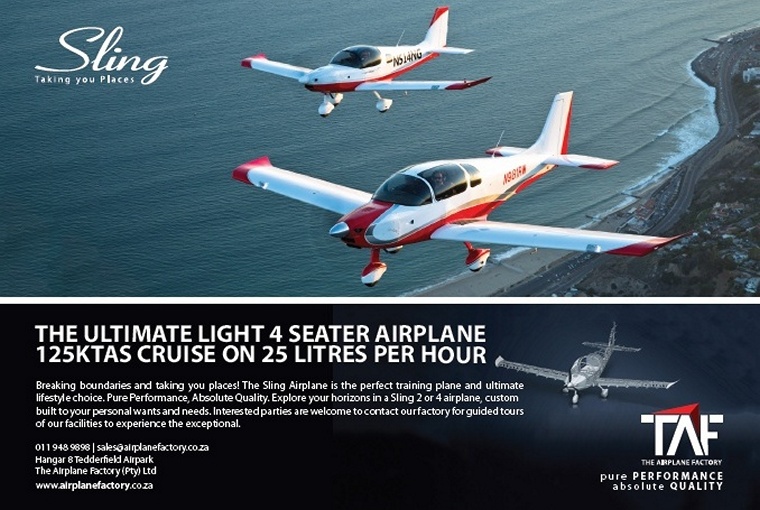

3 AUGUST 1921
Lieutenant John A. Macready of the U. S. Army Air Corps finds a new use for airplanes when he sprays a patch of ground infested with caterpillars. This practice becomes known as crop dusting.

The first known use of a heavier-than-air machine to disperse products occurred on 3 August 1921. Crop dusting was developed under the joint efforts of the US Agriculture Department, and the US Army Signal Corps's research station at McCook Field in Dayton, Ohio. Under the direction of McCook engineer Etienne Dormoy, a United States Army Air Service Curtiss JN4 Jenny piloted by John A. Macready was modified at McCook Field to spread lead arsenate to kill catalpa sphinx caterpillars at a Catalapa farm near Troy, Ohio in the United States.

Lt. Macready (right) and McCook Field engineer E. Dormoy (left) in front of the 1st crop duster airplane. Photo commons.wikimedia.org
The first test was considered highly successful. The first commercial operations were begun in 1924, by Huff-Daland Crop Dusting, which was co-founded by McCook Field test pilot Lt. Harold R. Harris.Use of insecticide and fungicide for crop dusting slowly spread in the Americas and to a lesser extent other nations in the 1930s. The name 'crop dusting' originated here, as actual dust was spread across the crops. Today, aerial applicators use liquid crop protection products in very small doses.
 |
 |
 Copyright © 2024 Pilot's Post PTY Ltd
The information, views and opinions by the authors contributing to Pilot’s Post are not necessarily those of the editor or other writers at Pilot’s Post.
Copyright © 2024 Pilot's Post PTY Ltd
The information, views and opinions by the authors contributing to Pilot’s Post are not necessarily those of the editor or other writers at Pilot’s Post.